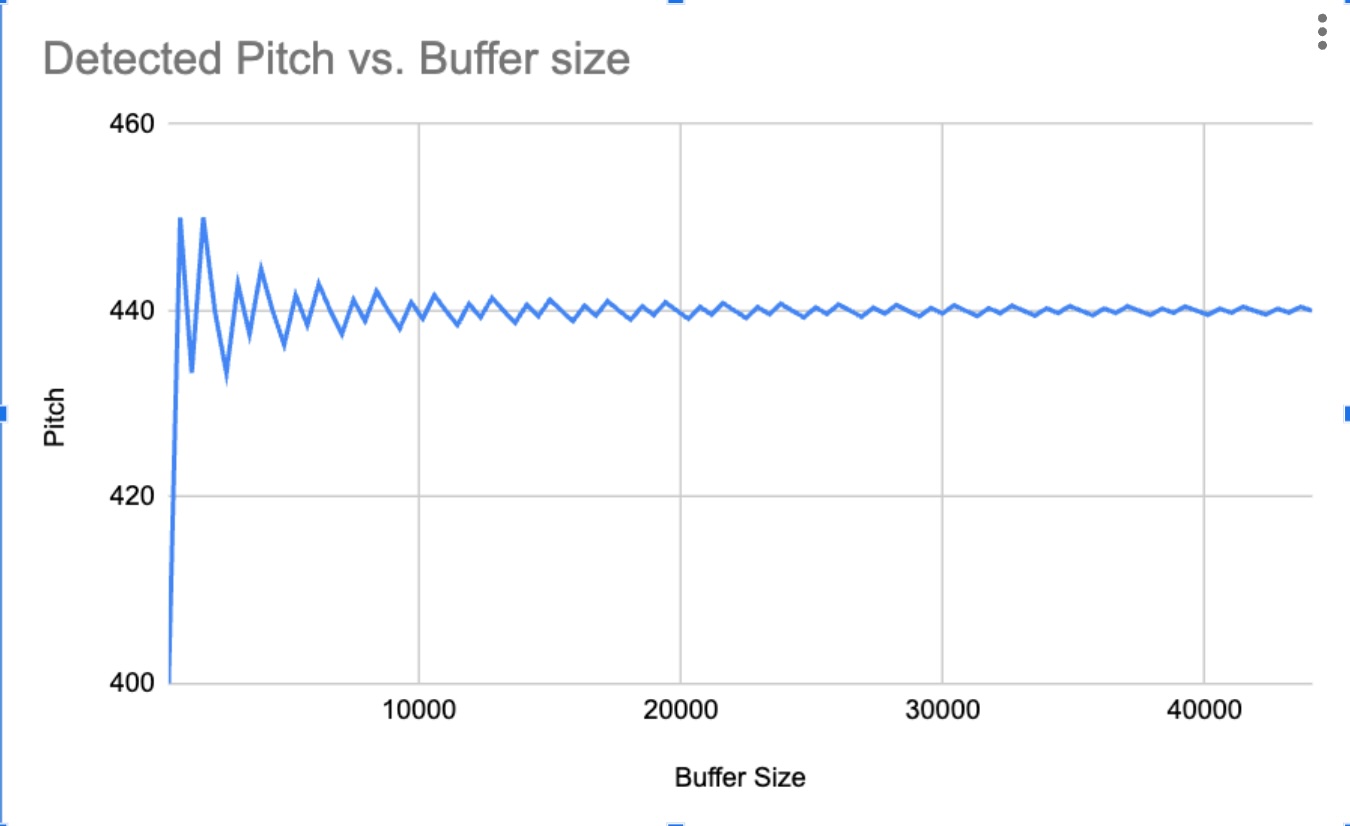Pitch detection variance by buffer size
a slighty deeper dive into the imprecise pitch detection I've seen
Since the last post, I've learned more about what's going on when I pass a 440 Hz sound to my FFT equation with a buffer size of 1,024 samples, and I get back 430.7 Hz as the result.
First, some definitions:
- The
sample rateis the number of data points—"samples"—per second of streaming audio. - The
buffer sizeis the number of samples processed at once. - The
bin widthis thesample ratedivided by thebuffer size. This value represents the frequency resolution of the FFT.
Detected Pitch by Buffer Size
My basic understanding of how this works is that the detected pitch is the closest multiple of the bin width. The lower the buffer size, and therefore larger the bin width, the larger the variance from the correct value you're going to see.
I ran a quick experiment where I incremented the buffer size and evaluated the pitch. I incremented the buffer size by 2205, since that's a factor of our sample rate of 44100.

Every time the buffer size is a multiple of 2205, we get the result of 440 Hz. This is because of the following relationship:
python
Because the target pitch is an integer multiple of the bin width in this instance, the FFT can accurately detect the pitch. If the target pitch were 441 Hz, however, this would still evaluate to 440 Hz with this buffer size.
This also means that a buffer size equal to the sample rate (buffer_size = 44100) results in a bin width of 1 Hz, meaning it can accurately report pitches to the nearest integer. If the buffer size were double the sample rate, the bin width would be 0.5 Hz, and so on. In simpler terms, a buffer size equal to the sample rate means that each chunk of audio is one second long, processed one second at a time.
There are ways to optimize this, making it possible to get more precise answers with smaller buffer sizes. To be continued...
Key Points:
- FFT Result at 430.7 Hz: The discrepancy between 440 Hz and 430.7 Hz is due to the frequency resolution (
bin width) determined by your buffer size. - Definitions: Clarified definitions and relationships between sample rate, buffer size, and bin width.
- Pitch Detection: Explained how the detected pitch corresponds to the nearest multiple of the bin width.
- Experiment: Showed that when the buffer size is a factor of the sample rate that matches the target pitch, the detection is accurate.
- Optimization: Mentioned that there are methods to improve pitch detection precision even with smaller buffer sizes.